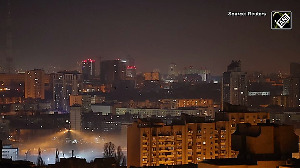Laying the roadmap for the introduction of a goods and service tax (GST), state governments on Tuesday proposed a dual GST structure, with two rates for goods and a single rate for services. The tax would be levied both by the Centre and the states, though there is still no clarity when the new tax regime will be implemented.
Union Finance Minister Pranab Mukherjee had during the budget set April 1, 2010, as the date for the new tax regime that seeks to re-distribute the burden of taxation equitably between manufacturing and services. The proposals unveiled through a discussion paper today will be followed by a draft of a constitutional amendment that is expected to be ready by November 15, said Asim Dasgupta, chairman of the empowered committee of state finance ministers.
The amendment is required to allow the Union government to tax beyond the manufacturing stage and allow states to tax services. There will also be separate legislations on central GST and model state GST that would spell out the rates at which the tax would be levied. Among the rates being discussed are between 8 and 10 per cent for the lower slab and 16 and 18 per cent for the upper slab. The idea is to have revenue neutrality, said an official.
In case of revenue loss to them, the states have proposed that the Centre compensates them for the loss during the first five years following introduction of GST.
The new GST regime will change the face of indirect taxation in the country just as the new direct code seeks to change the way tax is calculated on individuals and companies.
"It (GST) will re-distribute the burden of taxation equitably between manufacturing and services bringing about a qualitative change in the tax system," Mukherjee said at the release of the discussion paper here.
One of the issues that has been left open is subsuming purchase tax since some states felt they were earning substantial revenue from the purchase tax that is levied by foodgrain producing states. Besides, certain states continue to have reservations on the rates.
The states in the discussion paper have agreed to exempt manufacturers and service providers with an annual turnover of less than Rs 10 lakh. GST registration would be voluntary for them. Those with annual turnover above Rs 10 lakh and below Rs 50 lakh would attract a floor rate of 0.5 per cent tax. In the case of central GST, the threshold for goods is proposed at Rs 1.5 crore.
States like those in the north east and special category states that already have a lower threshold for value added tax at present, would be compensated for which the empowered committee of state finance ministers is discussion with the Union government.
The states also decided to have a list of exempted items and alcohol and petroleum products would be kept out of the new taxation regime and the Centre and states would continue to have their own levies on them. This is being done since these items attract high tax rates and provide a substantial portion of government revenue. Interestingly, a decision on whether natural gas would be kept out of GST has not been taken.
Both GST and excise duty would be levied on tobacco products, like cigarettes and gutka. Excise duty would be over and above the GST with no provision for input tax credit which allows a manufacture to subtract the tax he has already paid on an input from the tax on final product. Credit would, however, be available on the calculation of GST.










 © 2025
© 2025